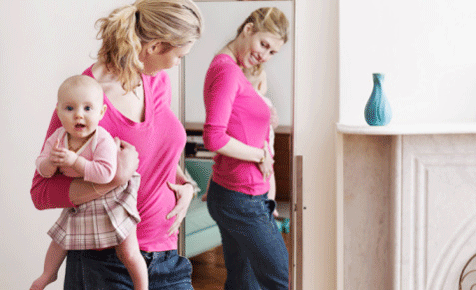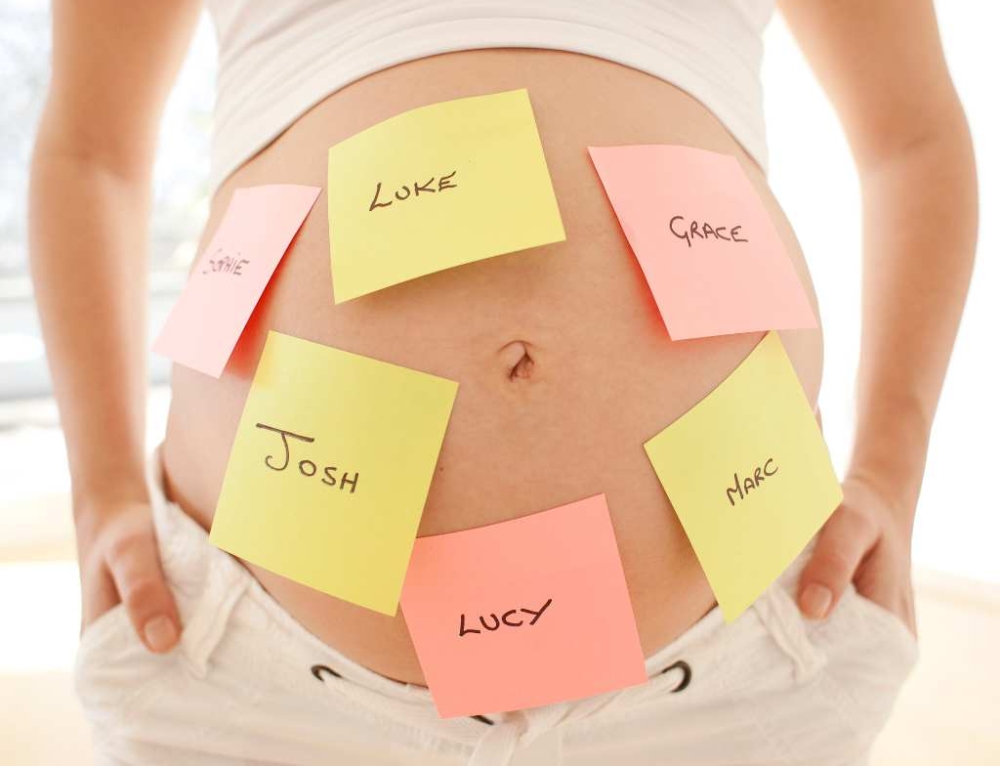For most women the 2nd trimester is the most comfortable phase of their pregnancy. However, this stage can also bring with it its own unique physical changes. For some women the physical changes of the 1st trimester can continue to linger until 14, 16 or even 20 weeks of the pregnancy and beyond.
The following is a general overview of some of the more common physical changes that women can experience during the middle phase of their pregnancies. They can include:
- Growing belly
- Breast changes and milk
- Aches and pains
- Braxton Hicks contractions
- Bleeding gums
- Metallic taste
- Skin hair and nail changes
- Nose, bleeds, smells, colds and sinus
- Restless legs
- Swelling fluid retention
- Vaginal changes
- Libido
Growing belly
After about 12 weeks of the pregnancy, your uterus grows up and out your pelvis, to accommodate your baby’s growth. Now your caregiver can actually feel the top of your uterus, also known as the ‘fundus’. By about the 20th week of pregnancy your fundus will be felt at around the level of your navel. As your waistline thickens and your pregnancy becomes more obvious, wearing tight-waisted clothing will no longer feel comfortable. Usually by about 20 weeks you will need to start considering wearing more stretchy or loose outfits.
As you watch yourself change and look more closely at other pregnant women, try to remember that every woman’s body is unique in how she changes and responds to her pregnancy. Each woman’s belly size and shape will differ according to her height and weight and will also depend on whether this is her first or subsequent baby, as will a woman’s weight gain during pregnancy.
Breast changes and milk
Breast tenderness, and possibly a slight increase in breast size are common signs of early pregnancy. The nipples often become very sensitive and the veins under the skin more noticeable. Many women increase in bra size as their pregnancy progresses (usually after around 20 weeks or so), but others do not notice much of an increase until after the birth and their breast milk comes in (which is temporary for a week or two).
It is possible for a woman to start producing ‘colostrum’ any time after about 14 to 16 weeks of the pregnancy. Colostrum is the first fluid a woman’s breasts produce and is a clear or creamy-yellow substance that is syrupy in consistency. It is possible for some women to hand express colostrum from their nipples during pregnancy, or to slightly leak colostrum occasionally, especially if this is not your first baby. (Be aware that leaking colostrum during pregnancy does not happen for every woman and your milk may not become obviously noticeable until after your baby is born.) If you are leaking colostrum and it is becoming annoying, you may need to wear breast pads inside your bra.
It is normal for some women to notice a small amount of blood mixed with the colostrum that may come away during pregnancy. This comes from within the breast and is caused by the rapid growth of blood vessels in the growing ductal system, in preparation for breastfeeding. Also, drops of blood may also be seen on the bra because the sticky colostrum temporarily ‘glues’ the nipple to the inside of the bra and a tiny bit of nipple skin is removed with the bra, which does heal.
Aches and pains
As the uterus grows and the baby’s movements increase in strength, a pregnant woman will experience many strange sensations. These can range from ‘stretching and burning’ to very mild cramping, to low, heavy aching and ‘dragging’ or stitch-like pains with tugging and pulling. Various aches and pains can cause great concern and worry, because the feelings are usually unfamiliar and it can be hard to know if they are normal or not. Generally if the pain is not extreme and/or there is no bleeding associated with it, it is usually normal.
Braxton Hicks contractions
After about 20 weeks of the pregnancy many women will experience Braxton Hicks contractions. These are ‘practise’ contractions of the uterus (also known as tightenings). Braxton-Hicks contractions are the uterus’ way of toning this muscle as well as stimulating your baby in utero. Every time your baby feels the uterus tightening around them, it helps to stimulate their circulation, similar to a brisk rub on your own skin, or a massage!
Women often describe Braxton-Hicks contractions as a feeling of ‘hardness’ or a mild cramping of their belly. Some liken it to a tight band being pulled across their uterus that usually eases if they change what they are doing. For many women the Braxton Hicks contractions are painless. Some women are not even aware they are happening until their caregiver points one out to them while feeling their belly. However, for a few women these ‘practise contractions’ can be quite strong and even painful or ‘labour-like’, especially if this is not your first baby.
Bleeding gums
During pregnancy, the amount of blood flowing through a woman’s body increases by up to 50%. This amazing process starts at about 6 weeks of the pregnancy and peaks by about 32 weeks. The increased blood flow means that a woman’s gums have a higher blood supply and are more likely to bleed with vigorous brushing and flossing, making them more prone to becoming inflamed (called ‘gingivitis’).
Metallic taste
Some women complain of change in their taste sensation during pregnancy, often being a metallic-type taste in their mouth. This physical change is not often formally recognised by caregivers. However, natural therapists believe the metallic taste could be a result of the body releasing toxins through the lymphatic system (your lymph glands transport and produce your body’s defence mechanisms against infection). Others believe it is the body’s reaction to being run down with stress or the result of more physical demands being placed on a woman’s body during pregnancy.
Skin, hair and nail changes
When a woman becomes pregnant her skin often goes through many changes. What each woman experiences during her pregnancy will be very individual to her. However, it is not unusual for many women to notice different changes during different pregnancies (and this has nothing to do with the sex of your baby!) Some women like the changes they experience. Their skin may look healthier and clearer, even ‘glowing’ so to speak. But for others, their skin changes are not pleasant because it is oily, more blotchy and perhaps has more blemishes.
Skin changes can be many and varied, with the middle of the pregnancy typically being associated with things like heat and hormonal rashes, oily or dry skin, stretch marks, a darkening (or pigmentation) of the skin in various areas, skin tags and red spider veins. You may also notice changes to your hair and nails.
Nose bleeds, smells, colds and sinus
The lining of the nose has an increased blood supply during pregnancy and tends to be more sensitive. This can cause the nose to produce more mucous and make you more prone to nose bleeds. Some women find they tend to suffer more from sneezing, allergy and/or sinus problems during pregnancy and if they get a common cold or the flu, this can take a little longer to recover from. Pregnant women also generally have a heightened sense of smell, making them less tolerable of certain odours.
Restless legs
Anyone can experience restless legs at any time of their lives. However, some women experience them for the first time during their pregnancy. It is hard to describe what restless legs are but the range of feelings can include:
- A sensation that the legs have to move all the time.
- The legs feeling ‘jittery’ or like they have ‘butterflies’ in them.
- Legs that ache with the woman feeling she has to be constantly walking
These sensations can make it difficult to sit for long periods (for example at the cinema or during meetings), and can stop you from sleeping well at night, especially during the later months of pregnancy. Restless legs are also a little recognised condition, with treatments generally involving natural therapies.
Swelling, fluid, retention
Fluid retention, swelling or ‘oedema’ affects about 65% of healthy pregnant women with a normal blood pressure and can start at any time after about 20 weeks of the pregnancy. Swelling can be noticed in the legs, feet and hands and you may find that your rings become tight, making it necessary for you to take them off until after your baby is born. Some women notice that their feet swell to the point that they need shoes that are ½ to 1 size larger.
Normal pregnancy swelling is generally more noticeable at the end of the day, although it may be worse on hot days, after a plane trip or if you are on your feet for long periods of time. Swelling can be also associated with varicose veins of the legs.
NOTE: If you notice that you seem to be swelling and you are more than 20 weeks pregnant, you should have your blood pressure checked by your caregiver or local doctor to make sure it is NOT related to high blood pressure in pregnancy.
Vaginal changes
The hormones of pregnancy affect a woman’s entire body, including the environment of her vagina. Many women notice that their vaginal discharge is different and that there may be more of it. However, pregnancy can also slightly alter a woman’s vaginal acidity (or pH), making her prone to annoying fungal infections (such as thrush) or an overgrowth of normal vaginal bacteria (called ‘gardnerella’). These types of infections are much more common during pregnancy (as well as in the weeks after the birth).
Libido
During the middle phase of pregnancy many women find they have a renewed interest in sex. As energy levels return and as you become more comfortable with the idea of being pregnant. The pregnant belly is not very big yet, making you feel relatively comfortable (compared to later in the pregnancy). There are now less concerns about miscarriage.







Leave A Comment
You must be logged in to post a comment.